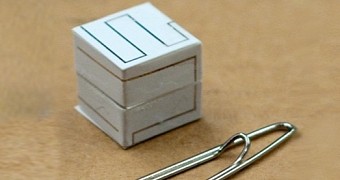KAUST electrical engineering professors Atif Shamim and Christian Claudel have created small, mobile sensors which, thanks to 3D printing technology based on inkjet printers, are small and cheap enough to be considered disposable.
That might not seem like such a big deal to you, but it actually is when you take into account the fact that every device in the relatively near future, even those with barely any power to speak of, will be connected to the Internet or at least some sort of central network in some fashion.
Making sure that the price doesn't go up during this transition from plain technology and furniture to “smart” versions is key. Otherwise, the Internet of Things won't amount to anything.
The new sensors invented by the two professors from the King Abdullah University of Science and Technology in Saudi Arabia are quite important because of that.
The sensor 3D printing method
Atif Shamim and Christian Claudel drew on their experience in wireless sensor network creation to make small sensors with wireless capabilities that can wirelessly communicate data to a cloud server, or the relays collecting info for them.
Currently, they only have floating sensors that monitor moving data, so as to make possible giving warnings when flooding is set to occur.
An inkjet printer was used to print electronics on paper from inks capable of conducting electricity, then the paper was folded into a cube with a side of 13 mm / 0.51 inches. The cube was filled with a light, tiny 3D printed microsensor and then fitted, on the outside, with an antenna that was also 3D printed.
The plan for the floating sensors is for them to be dropped into the water by unmanned aerial vehicles, UAVs for short, or air drones if you want to call them that.
The sensors follow the rush of the water and transmit the readings to the same UAVs which are hovering just a few meters behind them which, in turn, relay data to a fixed station. The idea is that the flooding alerts could be transmitted solely to the people actually at risk, instead of carrying out a full evacuation of an area or neighborhood.
The study “An Inkjet-Printed Buoyant 3-D Lagrangian Sensor for Real-Time Flood Monitoring” has more info if you're willing to pay some cash.
Applications in common situations
Basically, this 3D printed sensor technology can be customized for every other type of wireless communication setup, home Internet of Things ecosystem included. What's more, being able to detect ammonia, humidity, smoke and temperatures could make them invaluable in forest fires and vehicles.

 14 DAY TRIAL //
14 DAY TRIAL //